10 Anatomy of a Journal Article & Citations
Reading Journal Articles
Academic journal articles can seem long, dense, and tedious to beginner researchers. They may describe research strategies you are unfamiliar with, include complicated graphs or data tables, use field-specific vocabulary (we call this jargon), or assume you have background information on the topic that you don’t actually have yet. This is because these articles are written by experts for other experts to read.
Don’t worry! Every researcher out there was once in your position. It’s okay if you don’t understand everything in an article right away. As you get more familiar with research, you’ll improve in your ability to comprehend articles and know which parts are the most relevant to your work. It takes practice.
To start with, it helps to know two categories of information: information about the article and sections within the article.
To demonstrate, we’ll look in detail at the article you skimmed in the last chapter. If you didn’t skim it then, please do so now:
Activity: Skim a Journal Article
Follow the link. Then, read the title and skim each section of the article.
Reira-Sampol, A., Rodas, L., Martínez, S., Moir, H., & Tauler, P. (2022). Caffeine intake among undergraduate students: Sex differences, sources, motivations, and associations with smoking status and self-reported sleep quality. Nutrients, 14(8), 1661. https://www.ncbi.nlm.nih.gov/pmc/articles/PMC9029267/
Information About the Article
Another name for information about an article, book, etc. is metadata. You should be able to find the following information by skimming a journal article:
- Article title
- Journal title
- Publication date
- Volume and issue number
- Page number(s)
- DOI (or, digital object identifier)
- The DOI is simply a unique number attached to an article to identify it. You can think of it like your student ID number.
You need all these pieces of information to create a citation for an article. For the Reira-Sampol et al. article on undergraduate caffeine intake (2022), we can find all this information near the top of the screen:
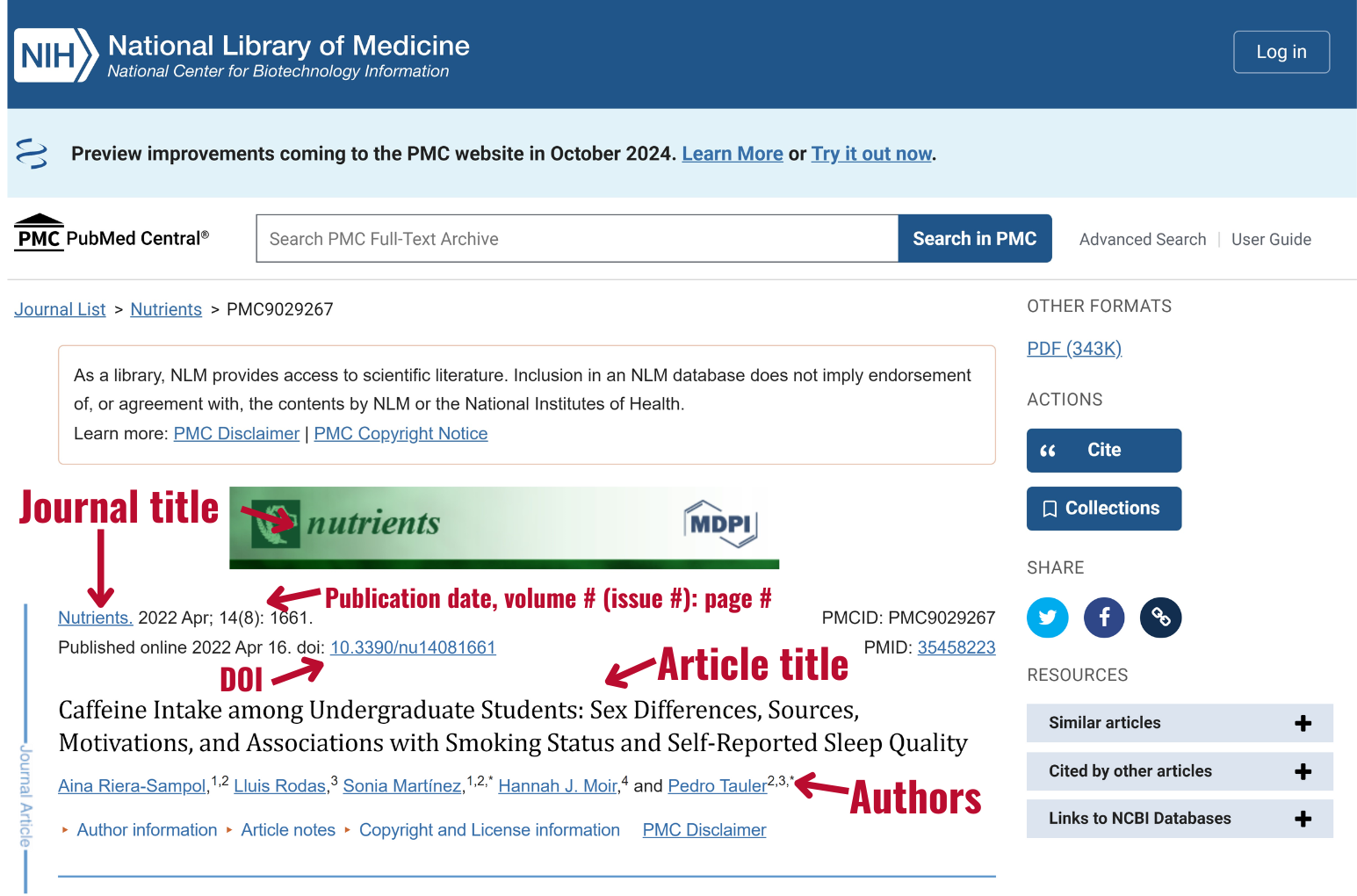
Here’s the full citation for the article again. This time, we’re including the DOI instead of a link. See if you can find each piece of metadata:
Reira-Sampol, A., Rodas, L., Martínez, S., Moir, H., & Tauler, P. (2022). Caffeine intake among undergraduate students: Sex differences, sources, motivations, and associations with smoking status and self-reported sleep quality. Nutrients, 14(8), 1661. https://doi.org/10.3390/nu14081661
We’ll go into more specifics about creating citations later. For now, comparing each piece of information should give you an idea of where to look for it and how it fits into a bigger citation.
Parts of a Journal Article
Watch the video below from the North Carolina State University Libraries for an introduction to reading journal articles (run time 7:03). Things to look out for:
- Where should you always start reading a journal article?
- How are articles different in the humanities vs. sciences and social sciences?
Definition Recap
An abstract is a short overview of an article’s purpose, research methods, and main takeaways. It’s the first part of a journal article you should read to get an overview of the content and decide whether the article is relevant to your research.
Some other video takeaways:
- Journal articles are tough! Give yourself time and grace when reading a new article, especially if it’s in a field outside your area of expertise.
- You don’t always have to read the entire journal article for it to be useful, nor do you have to read it in order. You might read different sections for different reasons:
- Results/Discussion/Conclusion: For the main results of the study and the authors’ primary takeaways.
- Literature Review: For a helpful summary of previous research on the topic.
- Methods: For details on how the study was conducted.
- Journal articles in the humanities are less rigidly structured than those in the sciences/social sciences. It might make more sense to read humanities articles from start to finish.
Let’s review the parts of a sciences/social sciences journal article by reexamining Reira-Sampol et al. (2022). Were you able to find the following sections?
Abstract
Read first for a short overview of the article.
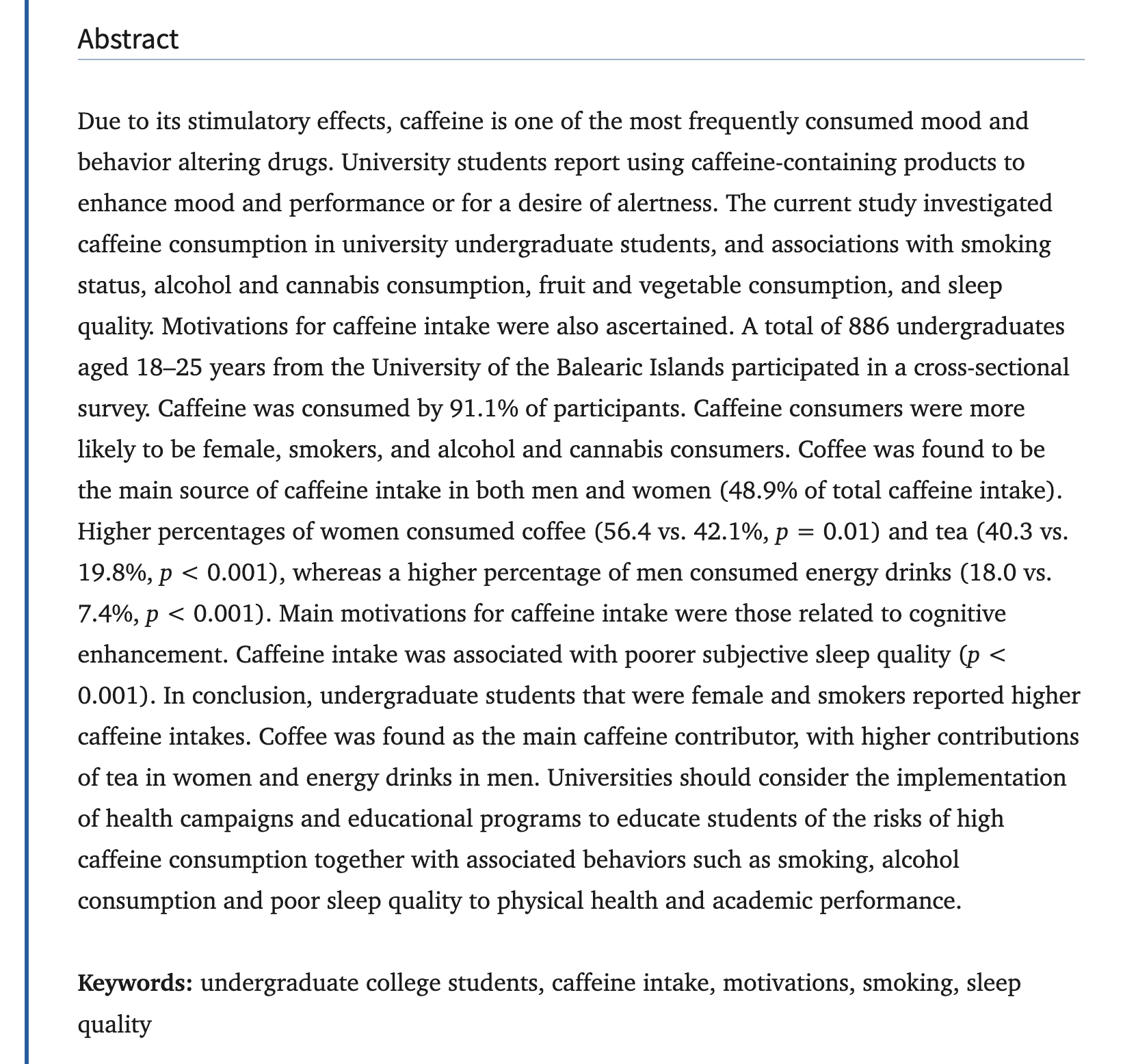
Introduction (or Literature Review)
An introduction to the topic which often includes a review of previous relevant research. Extremely helpful if you need background information on the topic. This section will also usually identify “gaps in the literature” – i.e., concepts that have not yet been studied that this paper is hoping to address.
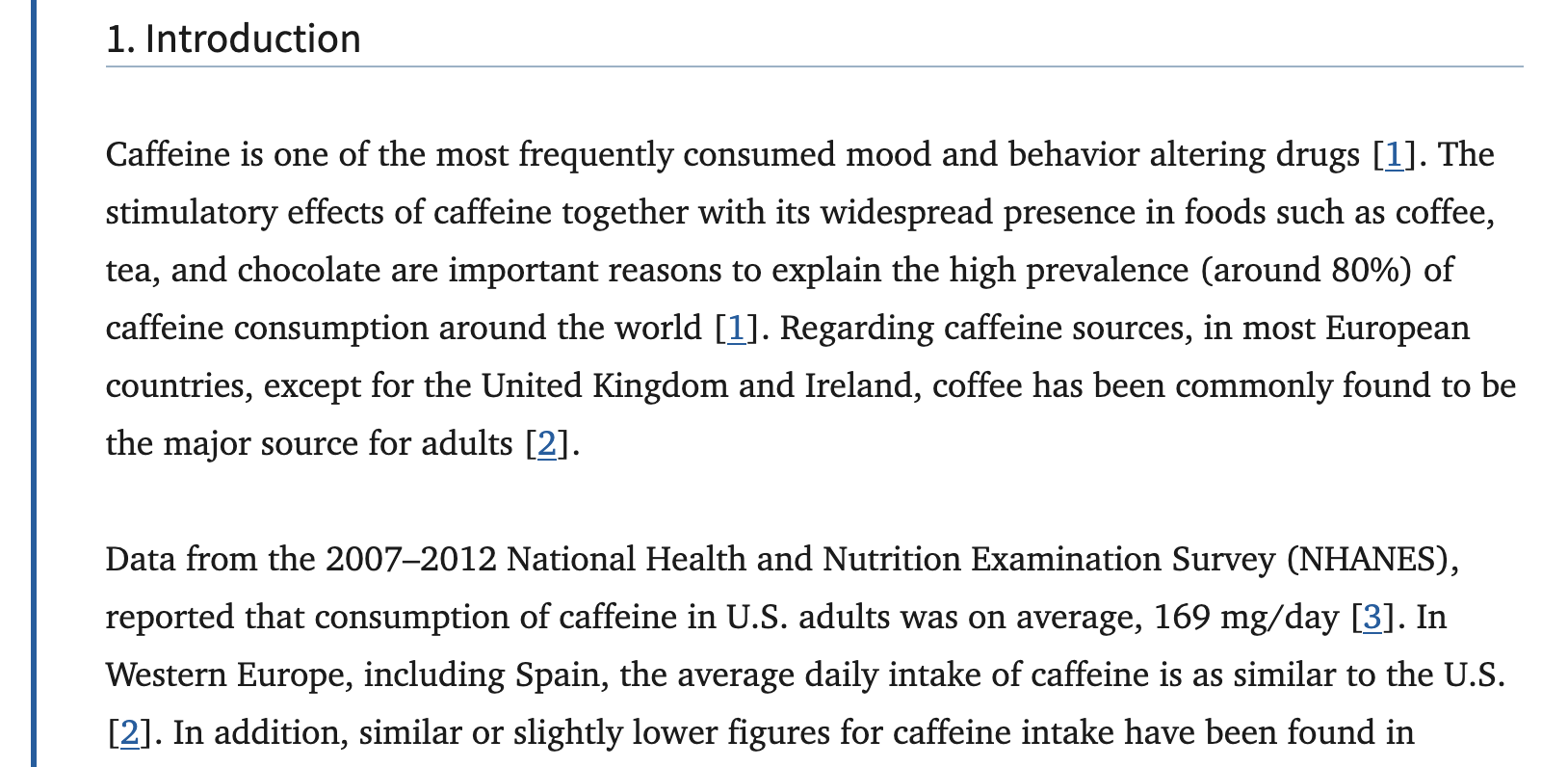
Methods
Details about how a study was done. Helpful if you are new to research methodology in your field or want to evaluate the chosen methods.
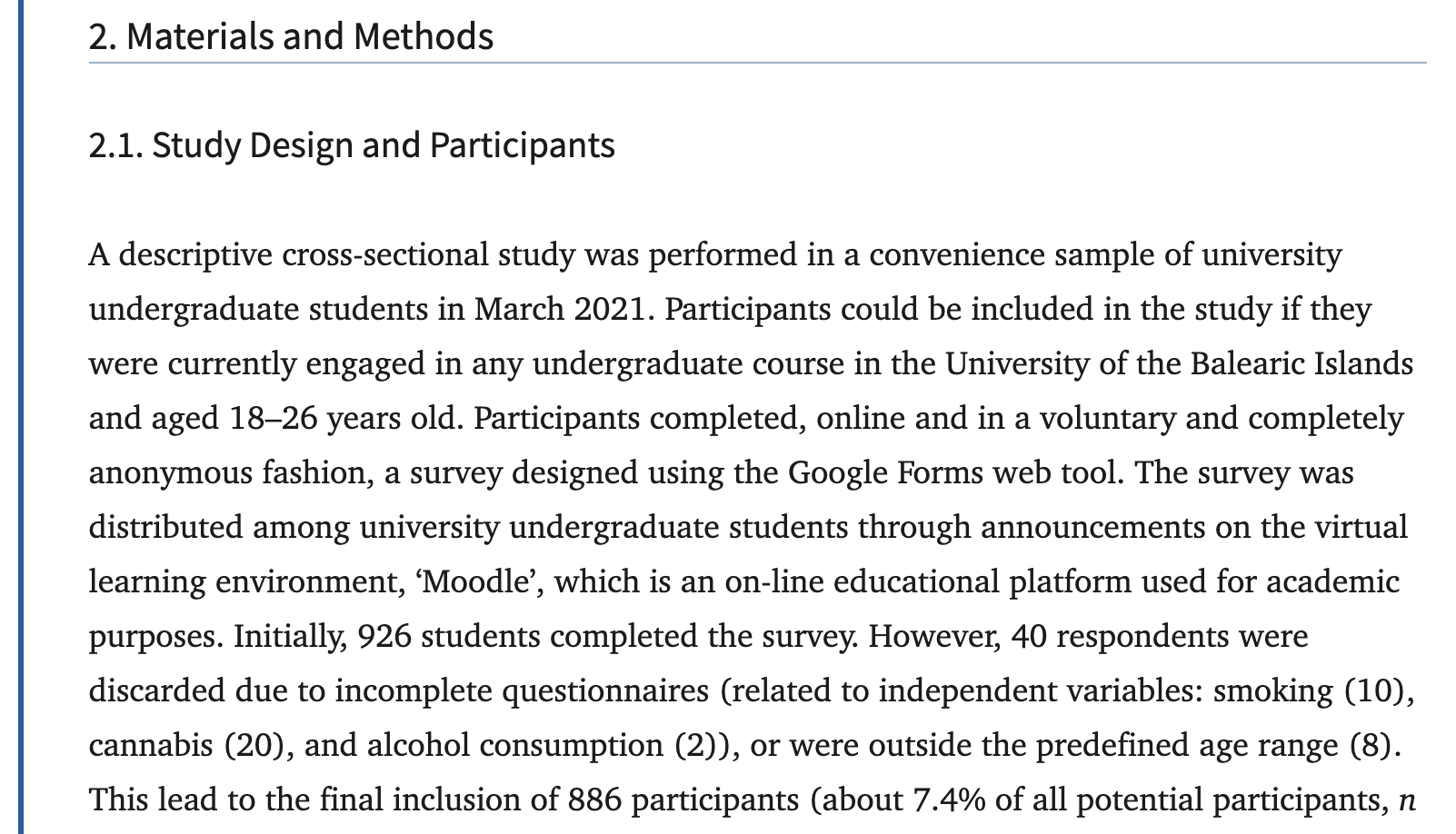
Results
The results of the study. Unlike the discussion section (which will interpret the results and put them into context with previous research or notable considerations from the study) the Results section is usually straightforward reporting of data alongside tables, graphs, and charts.
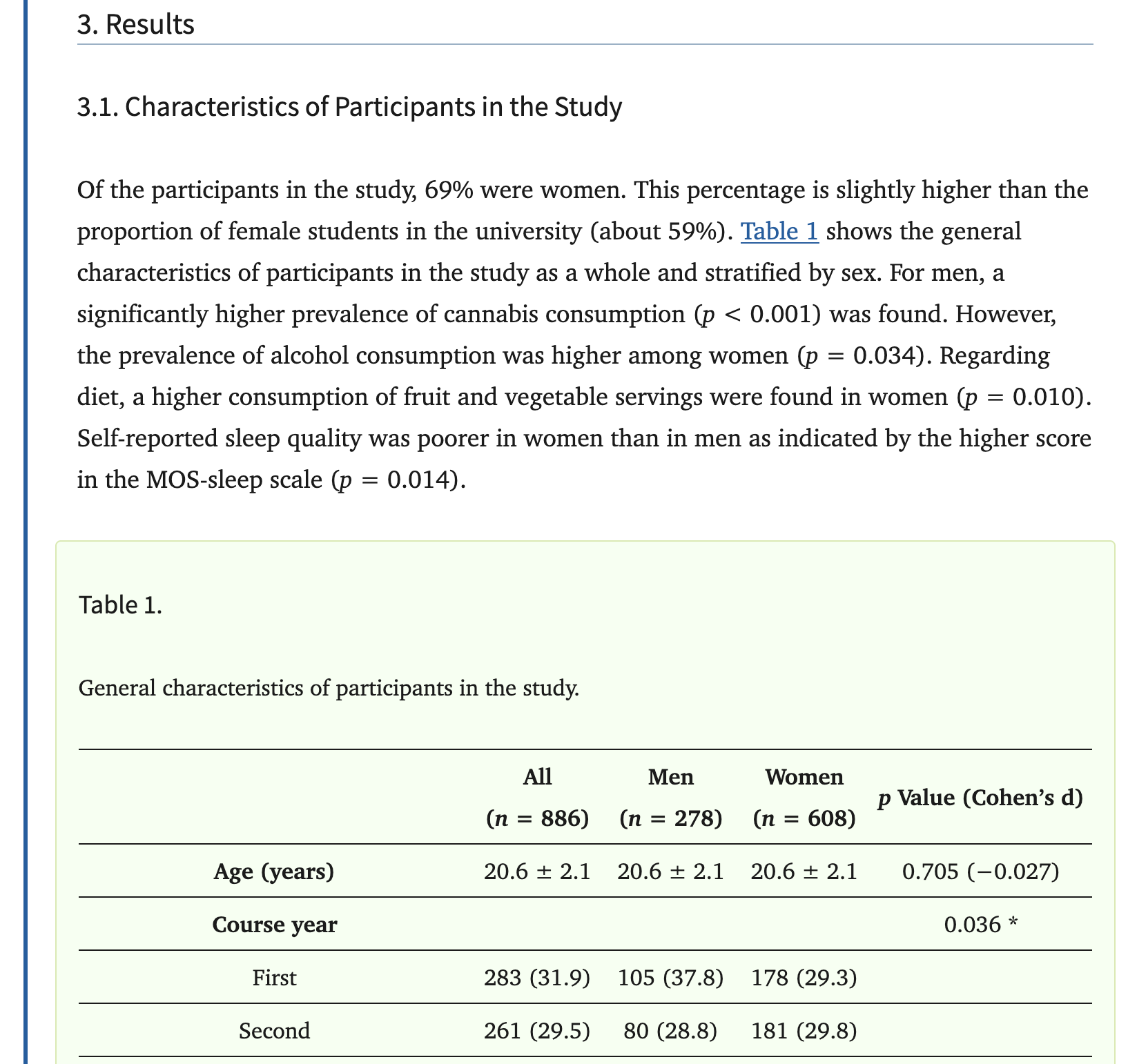
Discussion
Discusses research results in the context of the study’s goals, former research, study limitations, etc.
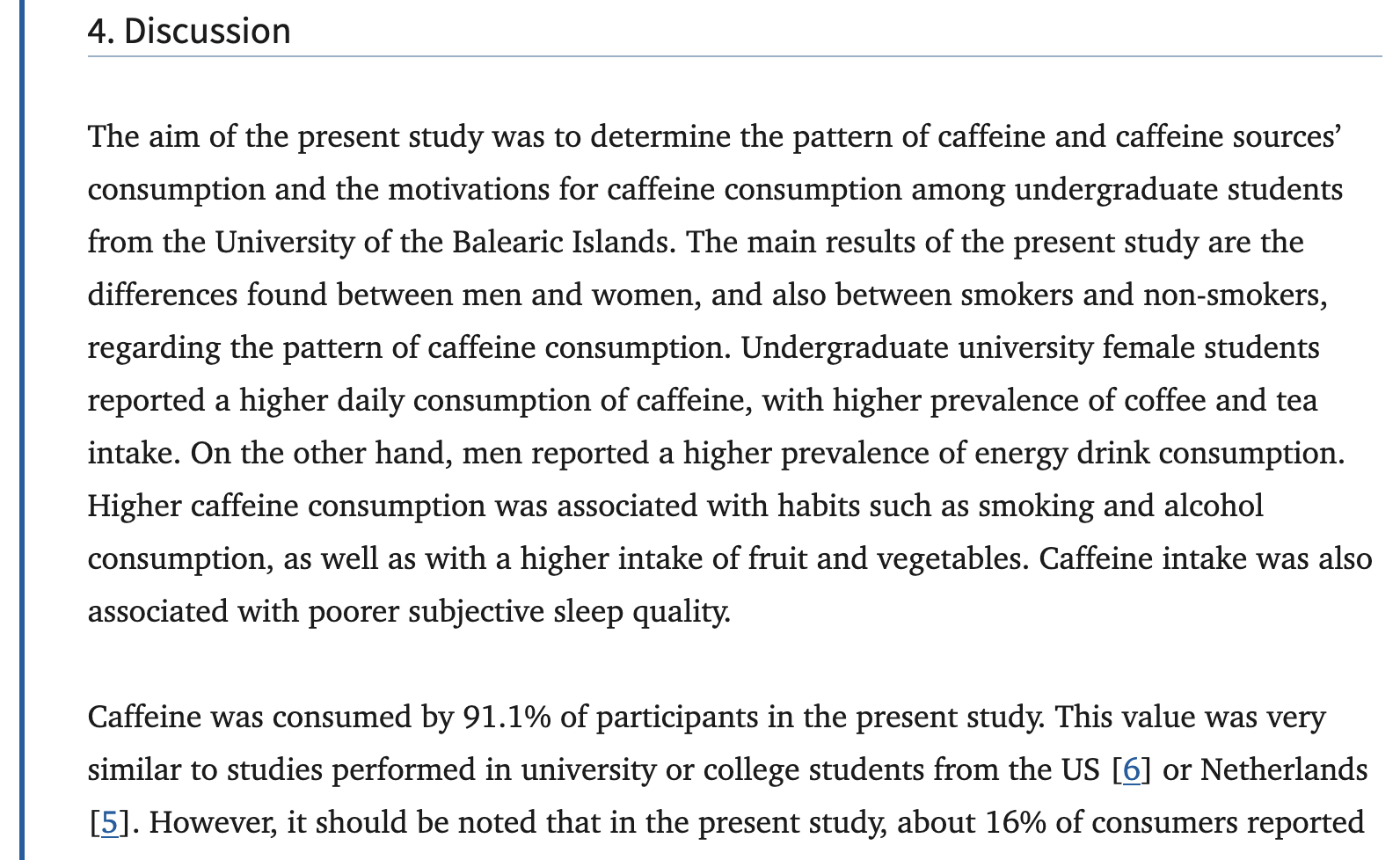
Conclusion
The article’s main takeaways and implications for practice or future research.
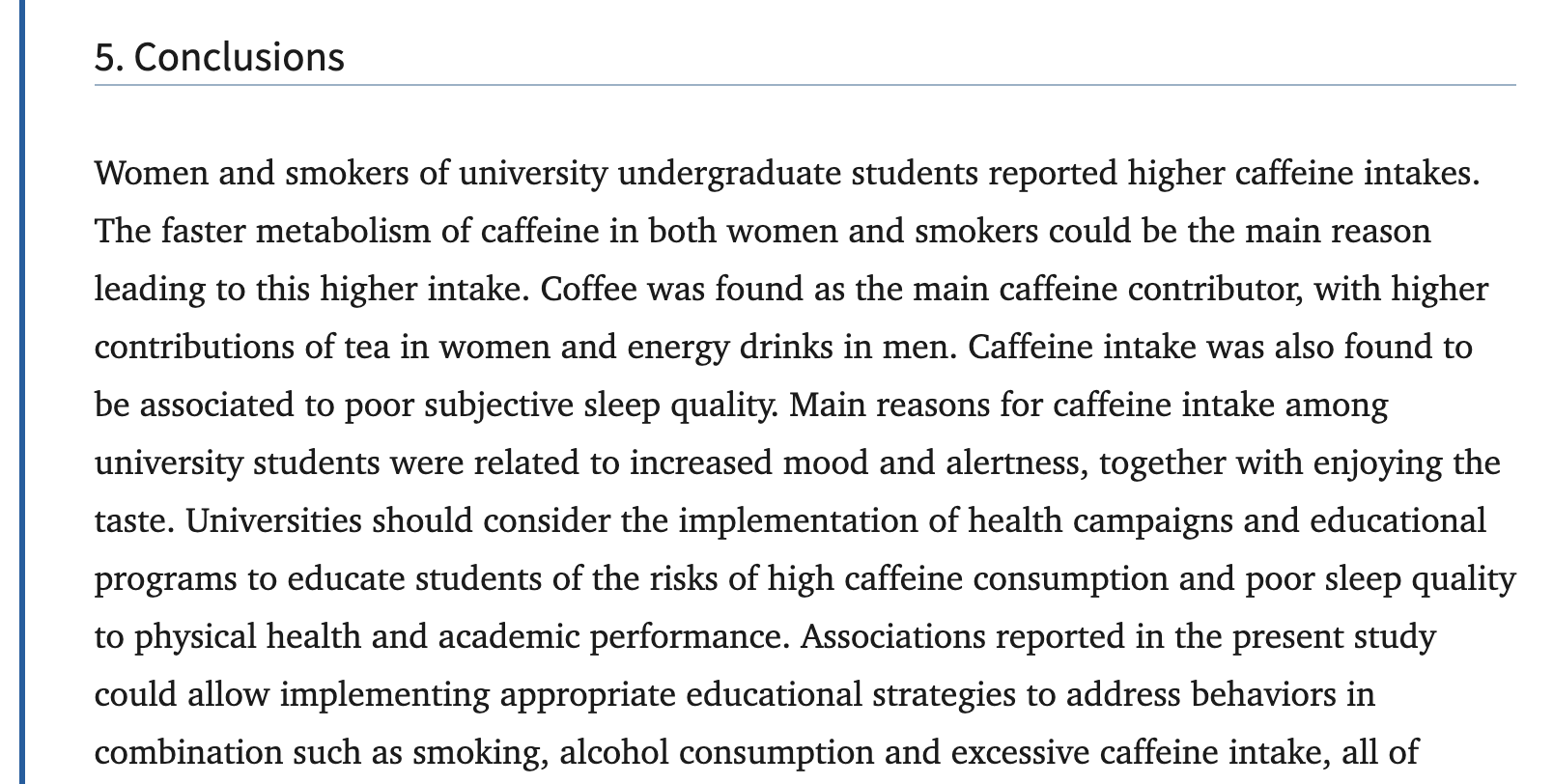
Bibliography
The complete list of sources the authors referenced in their article.
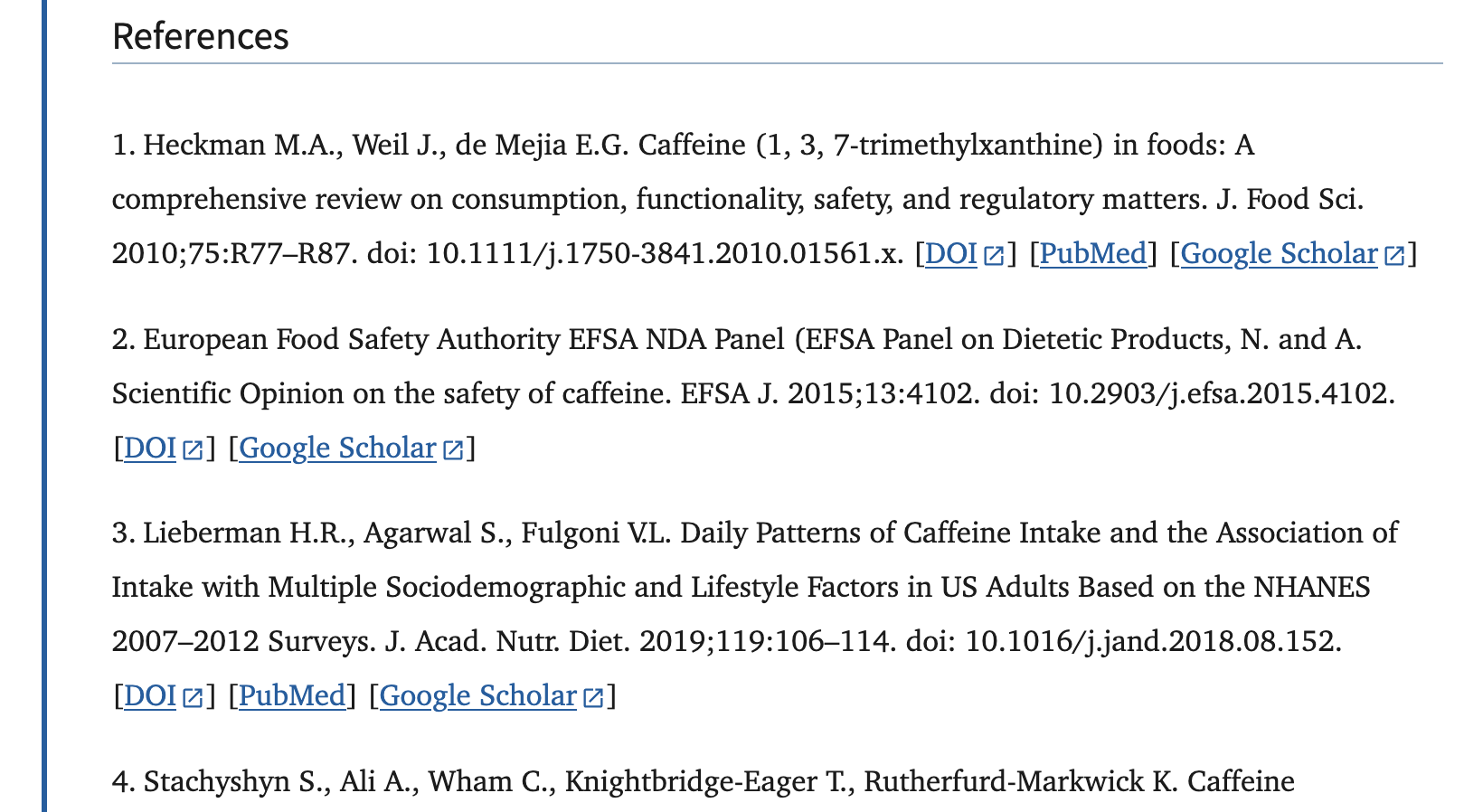
Note: Even though you can read just some sections of a journal article (or read them out of order), you should read an entire journal article if you’re going to cite it in your assignments.
Key Takeaways
- Locate an article’s title; author names; publication date; journal name, volume, and issue number; and DOI to create a citation.
- All modern journal articles should offer an abstract. Read the abstract first to get an overview of the article and decide whether it’s relevant to your research.
- Humanities and sciences/social sciences journal articles have different structures. Sciences/social sciences articles have more rigid sections that can be read out of order depending on the information needed.

